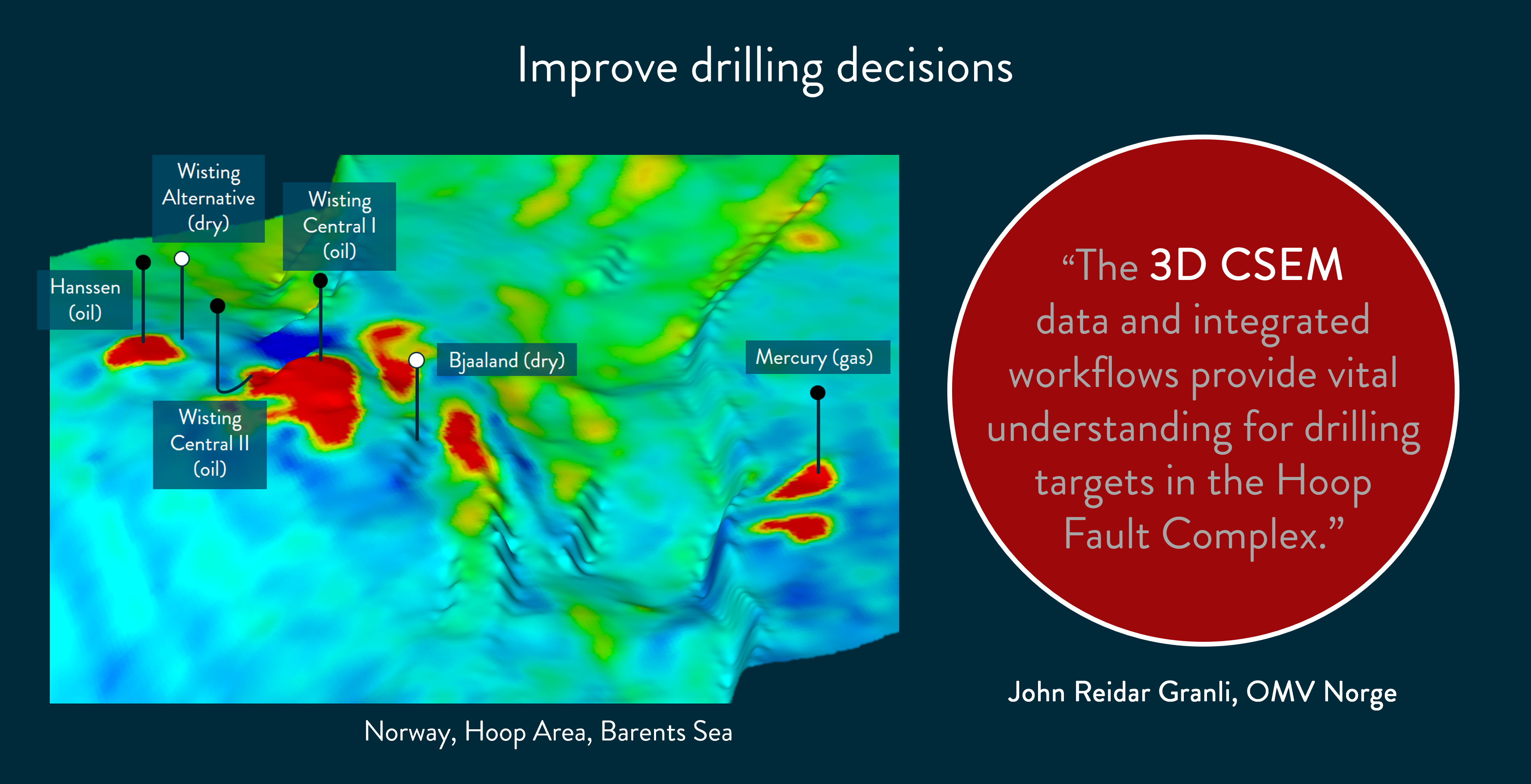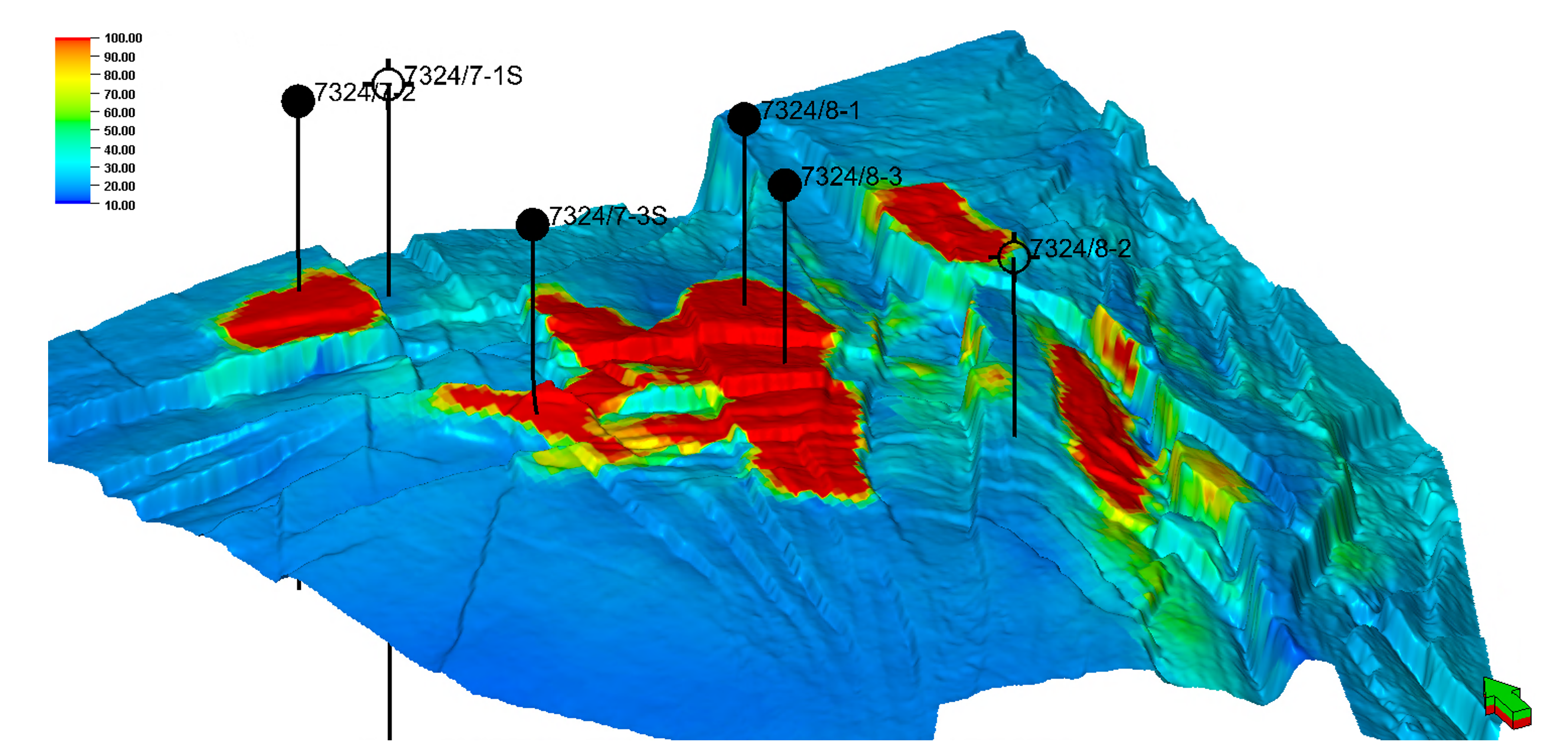Appraisal
Hydrocarbon (HC) discoveries go through an appraisal phase before being developed and put into production. The appraisal phase consists of appraisal drilling, new data acquisitions and/or studies that seek to reduce the uncertainties in important parameters like hydrocarbon volumes, saturation, reservoir quality, and producibility. In addition, there are often prospects close by that can potentially add to the resource base and hence improve the commerciality.
CSEM data has proven to be a valuable tool in this phase of HC field development – for example the Wisting field – and EMGS are experiencing a growing demand from customers for these types of surveys.

There are primarily two focus areas where customers are seeing value by integrating CSEM with seismic and the discovery well:
1) to either grow the resource base through de-risking unproven compartments and/or adjacent prospects,
2) To reduce the uncertainty in the HC volume distribution and increase the knowledge of of important reservoir parameters.
De-risking unproven compartments/near-field prospects
To prove up all compartments and near-field prospects with an appraisal/exploration well prior to a field development decision can be both very expensive and time consuming. Hence oil companies are increasingly mitigating this by applying geophysical data in addition to the well results and well tests to assess the proven, probable, and likely resources in the development area.
However, in many cases these results are ambiguous because the seismic results are non-unique. CSEM being an independent geophysical measurement of sub-surface resistivity has been demonstrated to be useful to verify or the presence or absence of a hydrocarbon accumulation across a fault zone, into the next sand lobe or within neighboring prospects.
Mapping of hydrocarbon extent and hydrocarbon pore volume (HCPV)
With logs from the discovery well available, a calibration can be done to estimate hydrocarbon saturation from the CSEM response. The CSEM inversion results will then provide a better estimate of the lateral extent of the hydrocarbon accumulation in between wells and also an estimate for the field/segment HCPV.

The Wisting Central demonstrates the effectiveness of leading edge exploration techniques – pioneered by Tullow Norway’s exploration team – that combine shallow seismic and electromagnetic survey data in the search of oil.
Angus McCoss, Tullow Oil
Improving reservoir characterization
Since the degree of saturation depends on reservoir quality, porosity and permeability a qualitative estimate for these parameters can be back calculated from CSEM on a reservoir scale and hence bring important information in field wide changes in reservoir characteristics with importance for reservoir drainage and hence development decisions.